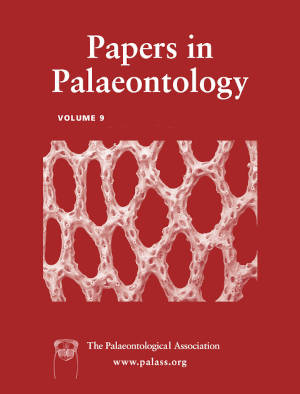Article: The last Baru (Crocodylia, Mekosuchinae): a new species of ‘cleaver-headed crocodile’ from central Australia and the turnover of crocodylians during the Late Miocene in Australia
Publication: Papers in Palaeontology
Volume:
9
Part:
5
Publication Date:
2023
Article number:
e1523
Author(s):
Adam M. Yates, Jorgo Ristevski, and Steven W. Salisbury
DOI:
10.1002/spp2.1523
Abstract
Abstract Baru is a genus that includes several large mekosuchine crocodylians from the Oligo-Miocene of Australia. Here we describe Baru iylwenpeny sp. nov. from a large sample of cranial bones from the Upper Miocene Alcoota Local Fauna of the Northern Territory. Baru iylwenpeny can be diagnosed by several autapomorphies that include, but are not limited to: extreme reduction of the pneumatic foramina associated with the diverticula that invade the bones of the suspensorium; and enlargement of the postcaniniform maxillary teeth resulting in crowding of the postcaniniform alveoli and a reduction in the number of maxillary alveoli to 12. The new species is the geologically youngest known member of the genus. While species of Baru are a ubiquitous component of Oligo-Miocene crocodylian assemblages from northern Australia, they are absent from all known Plio-Pleistocene sites, suggesting the extinction of the genus by the latest Miocene. We suggest that the marked taxonomic turnover of crocodylian assemblages between the Upper Miocene Alcoota Local Fauna and the Lower Pliocene is the result of a short period of severe aridity during the latest Miocene, causing widespread crocodylian extinctions across Australia, followed by the establishment of taxonomically novel crocodylian faunas in the Pliocene. This event mirrors similar contemporary losses of crocodylian diversity in Africa and South America, although these cases are partly driven by local tectonic events. It is likely that late Cenozoic global cooling also played a role in these extinctions.
